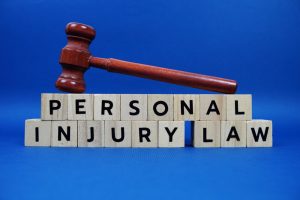After an accident, medical treatment is your top priority—but documenting your injuries and recovery is just as important for building a strong personal injury case. Solid documentation can make the difference between a lowball offer and full, fair compensation.
Here’s how to keep detailed, effective records that support your claim from day one.
Why Injury Documentation Matters
Insurance companies and courts need proof—not just that you were injured, but also how severely and how those injuries have affected your life. Clear documentation:
- Strengthens your credibility
- Verifies the impact of your injuries
- Helps calculate compensation for pain, suffering, and lost wages
Step 1: Seek Immediate Medical Attention
Whether it’s an emergency room visit, urgent care, or your primary doctor, get examined right away—even if your injuries seem minor. Delays in treatment can hurt your case and give insurers reason to doubt your claim.
Tip: Always describe every symptom to your doctor, even minor aches or emotional distress.
Step 2: Keep All Medical Records
Hold on to:
- Hospital discharge papers
- Treatment summaries
- Prescriptions and medication info
- Physical therapy or chiropractic records
- Imaging reports (X-rays, MRIs, CT scans)
- Referrals to specialists
Make a dedicated folder (physical or digital) to store everything in one place.
Step 3: Maintain an Injury Journal
An injury journal tracks how your injuries affect your day-to-day life. Write entries daily or weekly that include:
- Pain levels (use a 1–10 scale)
- Mobility or limitations (e.g., “Can’t lift objects,” “Need help dressing”)
- Missed activities (work, hobbies, social events)
- Emotional effects (e.g., anxiety, depression, sleep loss)
This helps support your claim for pain and suffering and paints a human picture of your recovery.
Step 4: Take Photos of Your Injuries
Document visible injuries as they evolve:
- Right after the accident (if possible)
- During recovery (bruises, swelling, scars)
- Post-surgery or treatment effects
Date-stamped photos provide powerful visual proof of the trauma you endured.
Step 5: Track All Related Expenses
Keep receipts and records of:
- Medical bills
- Travel to appointments
- Medical devices (braces, crutches, wheelchairs)
- Home care or child care services
- Lost wages (collect pay stubs or employer notes)
These costs add up and are fully recoverable in most personal injury claims.
Step 6: Follow All Medical Advice
Always attend follow-up appointments and follow your doctor’s treatment plan. Failing to do so can suggest that your injuries weren’t serious—or that you didn’t make a reasonable effort to recover.
Conclusion: Organized Records = Stronger Case
The more detailed and accurate your documentation, the easier it is for your attorney to build a compelling case—and the harder it is for insurers to dispute your claim.
Need help gathering or organizing your injury records? We’ve got you.
Contact the Personal Injury Law Firm of Figeroux & Associates
Schedule a free consultation today!
Call 855-768-8845
Visit www.askthelawyer.us
Click Here to Schedule a Consultation with Figeroux & Associates Today!



